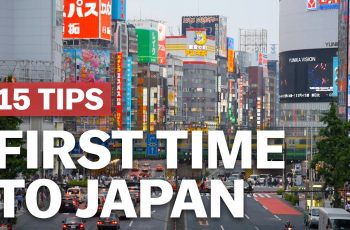Japan, a land of serene beauty, ancient traditions, and cutting-edge modernity, also harbors a profound and often chilling connection to the supernatural. Its rich tapestry of folklore is interwoven with tales of yūrei (ghosts), onryō (vengeful spirits), and places steeped in sorrow, tragedy, and unexplained phenomena. These aren’t mere campfire stories; they are deeply ingrained in the cultural psyche, a testament to a belief that the veil between worlds is sometimes terrifyingly thin.
For those brave enough to peer into this darkness, Japan offers a plethora of locations where the echoes of the past resonate with a spine-chilling intensity. From dense forests echoing with silent despair to abandoned tunnels and historic castles, these sites are not for the faint of heart. Prepare yourself as we journey through ten of Japan’s most haunted places, exploring their terrifying horror stories and dark legends.
A Note on Respect: Many of these locations are sites of real tragedy. While exploring their haunted reputations, it’s crucial to approach them with respect for the spirits believed to reside there and the very real human suffering that often forms their foundation.
1. Aokigahara Forest (Jukai – The Sea of Trees)
Location: Yamanashi Prefecture, Northwest flank of Mount Fuji
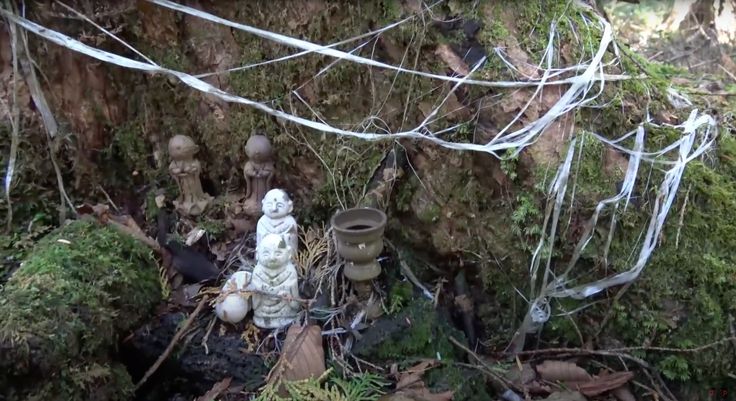
The Dark Legend: Perhaps Japan’s most infamous haunted location, Aokigahara, grimly nicknamed the “Suicide Forest,” holds a sorrow unparalleled. Its dense, light-blocking canopy and twisted, moss-covered trees create an unnervingly silent and disorienting atmosphere. Compasses are rendered useless by the rich magnetic iron in the volcanic soil, adding to the feeling of being utterly lost. For centuries, Aokigahara was associated with ubasute, the alleged ancient practice of abandoning elderly or infirm relatives to die during times of famine. However, its modern notoriety stems from its tragic status as one of the world’s most common sites for suicide.
Terrifying Horror Stories:
-
Whispers and Cries: Visitors report hearing disembodied whispers, mournful cries, and chilling screams carried on the wind, even when no one else is seemingly around. The silence of the forest is often broken by sounds that have no discernible source.
-
Apparitions of the Despairing: Numerous sightings of spectral figures, often pale and sorrowful yūrei, have been reported. Some appear to be hanging from trees or wandering aimlessly, their forms ethereal and deeply unsettling.
-
Intense Feelings of Dread and Sadness: Many who enter Aokigahara, even those unaware of its reputation, describe an overwhelming sense of oppressive sadness, despair, and a palpable malevolence that seems to emanate from the forest itself. It’s said the forest actively draws in those with suicidal thoughts.
-
Personal Belongings: The forest floor is tragically littered with personal belongings left behind – shoes, photographs, letters, and ropes. Volunteers who conduct searches often speak of the profound emotional toll of these discoveries. It’s said that the spirits of those who died here remain tethered to these objects.
-
The “Tape Trail”: To avoid getting lost, visitors often use plastic tape to mark their path. However, tales abound of these tapes being mysteriously cut or moved, leading people deeper into the labyrinthine woods.
Cultural Impact: Authorities have placed signs urging individuals to seek help, and patrols regularly search for those in distress. Despite these efforts, the forest’s grim reputation persists, a somber reminder of human despair.
2. Inunaki Tunnel (Old Inunaki Tunnel)
Location: Miyawaka, Fukuoka Prefecture
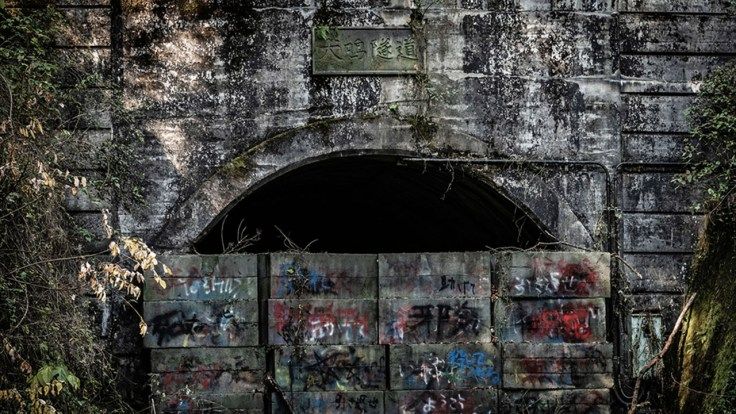
The Dark Legend: The Old Inunaki Tunnel is a name that sends shivers down the spines of paranormal enthusiasts in Japan. The tunnel itself is now sealed off, but the legends surrounding it and the supposedly abandoned Inunaki Village beyond are potent. The most pervasive story claims that Inunaki Village was an isolated community whose residents, due to inbreeding or extreme isolation, became violent and hostile to outsiders. A sign at the entrance allegedly declared: “The Japanese constitution and laws do not apply here.”
Terrifying Horror Stories:
-
The Burned Couple: The most horrific tale associated with the tunnel involves a young couple who were brutally murdered and burned alive by a group of youths near or inside the tunnel in the late 1980s. Their tormented spirits are said to haunt the area.
-
Aggressive Spirits: Reports from those who have dared to approach the sealed entrance (or managed to find ways around it in the past) speak of aggressive spiritual activity. This includes disembodied screams, sudden drops in temperature, car engines stalling, and electronic devices malfunctioning.
-
Shadow Figures and Growls: Dark, fleeting figures are often seen darting in the peripheral vision, accompanied by guttural growls and the unsettling sound of dogs barking (Inunaki means “dog’s cry”).
-
Physical Sensations: Some visitors have reported being touched, pushed, or feeling an intense, suffocating pressure on their chests. The feeling of being watched is almost universally reported.
-
The “Forbidden Village”: While the existence of the murderous, lawless village is likely an urban legend embellished over time, the fear it inspires contributes significantly to the tunnel’s terrifying aura. The idea of a place beyond societal rules, where primal brutality reigns, is a powerful horror trope.
Cultural Impact: The Inunaki legend inspired the 2019 horror film “Howling Village,” further cementing its place in Japanese horror iconography. The sealed tunnel stands as a silent, foreboding monument to its dark tales.
3. Oiran Buchi (Courtesan’s Gorge)
Location: Yamanashi Prefecture
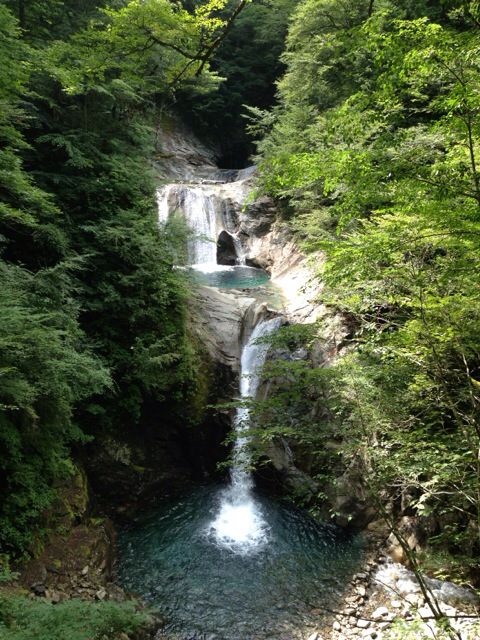
The Dark Legend: Oiran Buchi is a picturesque yet deeply tragic location. The name translates to “Courtesan’s Gorge” or “Prostitute’s Abyss.” The legend dates back to the 16th century, during the Sengoku period (Warring States period). The area was home to a gold mine controlled by the Takeda clan. To keep the miners entertained and prevent them from leaving (and potentially revealing the mine’s location), around 55 courtesans (oiran) were employed. However, when the Takeda clan faced defeat at the Battle of Nagashino, they decided to silence anyone who knew the mine’s secrets. The courtesans were invited to a party on a specially constructed wooden platform over the gorge. As they danced and celebrated, the ropes holding the platform were cut, sending all 55 women plummeting to their deaths in the ravine below.
Terrifying Horror Stories:
-
Wails of Betrayal: The most common reports are the disembodied wails and screams of women echoing from the gorge, especially at night. These are believed to be the cries of the betrayed courtesans, forever trapped in their final, terrifying moments.
-
Apparitions on the Bridge: A suspension bridge now spans the gorge, and visitors have reported seeing ghostly female figures on or near it, sometimes appearing to reenact their fatal fall.
-
Feelings of Despair and Accusation: Many feel an overwhelming sense of sorrow and betrayal when visiting Oiran Buchi. Some have even reported feeling a cold, accusatory presence, as if the spirits are aware of their intrusion.
-
Unexplained Noises: The sound of traditional Japanese music or laughter has been reported, abruptly cut short, mirroring the fatal party.
-
The Weeping Rock: Local lore speaks of a rock face near the gorge that appears to “weep” water, said to be the tears of the murdered oiran.
Cultural Impact: Oiran Buchi serves as a haunting reminder of the brutality of war and the innocent lives lost. The beauty of the gorge is forever tainted by its dark history, making it a place of somber reflection and chilling encounters.
4. Okiku’s Well (Himeji Castle)
Location: Himeji Castle, Hyogo Prefecture
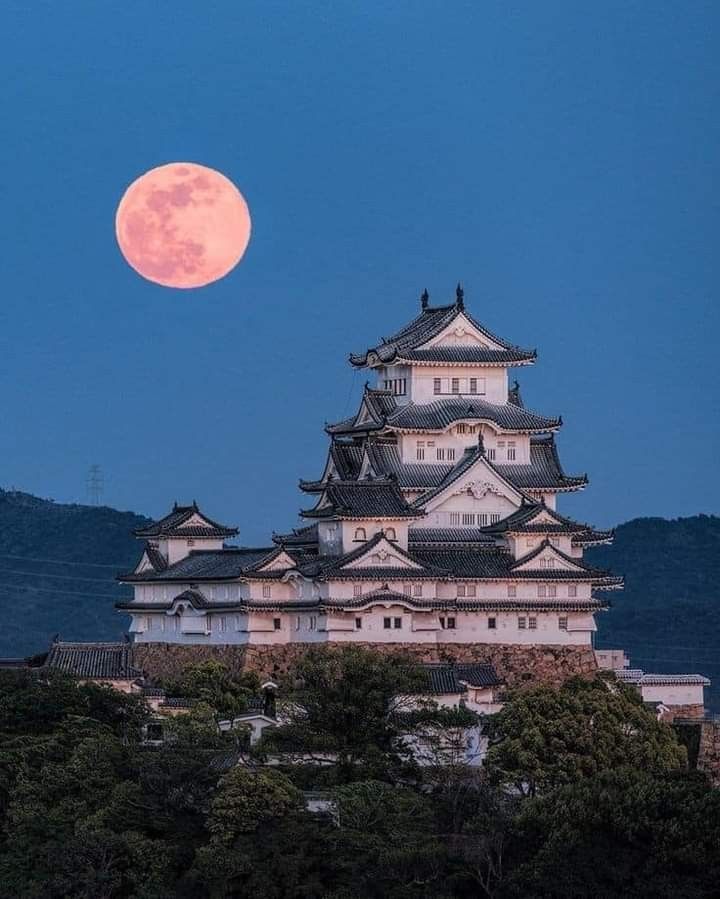
The Dark Legend: Himeji Castle, a stunning UNESCO World Heritage site, is not only Japan’s largest and most visited castle but also home to one of its most famous ghost stories: the tale of Okiku. There are variations, but the most common tells of Okiku, a beautiful servant girl. She either accidentally broke one of ten valuable Dutch plates belonging to her master, the samurai Tessan Aoyama, or was framed for it after rejecting his advances. Enraged, Aoyama had her tortured and killed, then threw her body down a well within the castle grounds.
Terrifying Horror Stories:
-
The Counting Ghost: Okiku’s onryō (vengeful spirit) is said to rise from the well each night. She can be heard slowly counting from one to nine. After reaching nine, she lets out a bloodcurdling shriek or a mournful wail, representing the missing tenth plate and her unending torment.
-
Whispers and Sobs: Visitors near the well, especially at dusk or during quiet moments, have reported hearing faint sobs and whispers, believed to be Okiku’s lament.
-
A Chilling Presence: Even without auditory phenomena, many feel a distinct cold spot and an eerie presence around the well, a sense of profound sadness mixed with a faint undercurrent of anger.
-
Influence on Culture: The story of Okiku (Banshū Sarayashiki) is a classic kaidan (ghost story) that has been adapted into numerous kabuki plays, bunraku puppet shows, and films, solidifying its place in Japanese folklore. The sound of a woman counting to nine has become a chilling trope in Japanese horror.
Cultural Impact: Okiku’s Well is a specific, marked location within Himeji Castle, drawing curious and cautious visitors. Her story adds a layer of tragic romance and horror to the castle’s otherwise majestic history.
5. Sunshine 60 Building
Location: Ikebukuro, Tokyo
The Dark Legend: Unlike ancient castles or remote forests, Sunshine 60 is a modern skyscraper, once the tallest in Asia. However, its foundations are built upon deeply stained ground. The building stands on the former site of Sugamo Prison, which, after World War II, housed and executed notorious Japanese war criminals, including Hideki Tojo. This dark history has led to persistent rumors of paranormal activity.
Terrifying Horror Stories:
-
Shadowy Figures and Apparitions: Office workers and visitors, particularly those working late at night, have reported seeing shadowy figures in hallways, reflections in windows where no one should be, and even full-bodied apparitions dressed in what appear to be old-fashioned prison or military attire.
-
Unexplained Cold Spots and Sounds: Sudden, inexplicable cold spots are common, along with strange noises like footsteps in empty corridors, doors creaking open or shut, and faint whispers.
-
Malfunctioning Equipment: Elevators behaving erratically, lights flickering or turning off, and computers crashing for no reason are frequently attributed to the restless spirits.
-
Feelings of Being Watched: A pervasive feeling of being watched or an unseen presence is often reported, particularly in the lower levels or areas that correspond to the former prison’s execution grounds or cell blocks.
-
Nightmares and Unease: Some who work in the building have reported experiencing unusually vivid and disturbing nightmares, or a general sense of unease and dread that dissipates once they leave the premises.
Cultural Impact: Sunshine 60 is a stark example of how modern structures can inherit the spiritual baggage of their land. The juxtaposition of a bustling commercial center with a dark, violent past creates a uniquely unsettling atmosphere.
6. Round Schoolhouse (Old Bibai City Elementary School)
Location: Bibai, Hokkaido
The Dark Legend: The now-abandoned and decaying Round Schoolhouse in Bibai, Hokkaido, is a magnet for ghost hunters and urban explorers. Built in 1906 and later expanded with its distinctive circular structure, it served a coal mining community. As the mines declined, the school was eventually abandoned in the 1970s. Its dilapidated state, with broken windows, crumbling walls, and eerie silence, naturally lends itself to ghost stories. Legends speak of tragic accidents involving students, harsh treatment, or even suicides within its walls.
Terrifying Horror Stories:
-
Child-like Apparitions and Laughter: The most common reports involve sightings of small, shadowy figures resembling children darting through hallways or peering from broken windows. Faint sounds of children’s laughter, singing, or crying are also frequently heard.
-
Moving Objects: Desks and chairs have been reported to move on their own, objects thrown by unseen forces, and doors slamming shut.
-
Disembodied Voices: Whispers and indistinct chatter, as if a class were still in session, are often reported by those brave enough to venture inside. Sometimes, specific words or names are heard.
-
Feelings of Sadness and Playfulness: Visitors often describe a strange mix of emotions: deep sadness, presumably from the spirits of children who suffered, but also a sense of playful, mischievous energy.
-
Photographic Anomalies: Orbs, strange mists, and unexplained figures frequently appear in photographs and videos taken within the school.
Cultural Impact: The Round Schoolhouse is a classic example of a “haikyo” (ruin) that has taken on a life of its own through urban legends. Its eerie architecture and isolated location make it a prime spot for experiencing the unsettling atmosphere of abandoned places.
7. Old Chusetsu Tunnel
Location: Near Kyoto
The Dark Legend: Japan has numerous haunted tunnels, each with its own grim tale, and the Old Chusetsu Tunnel is another prominent one. While details can be murky and blend with other tunnel legends, it’s often associated with murders or tragic accidents that occurred within its dark, damp confines. The narrowness and length of old tunnels naturally create a claustrophobic and unnerving environment.
Terrifying Horror Stories:
-
The Woman in White: A common sighting is that of a spectral woman, often dressed in white, seen either at the tunnel’s entrance, within its depths, or even appearing suddenly in front of cars.
-
Changing Length: A particularly unsettling legend associated with Chusetsu (and other haunted tunnels) is that its perceived length can change. Some drivers report it feeling inexplicably longer on the return journey, or that the exit seems to recede as they approach.
-
Disembodied Screams and Voices: Screams, moans, and indistinct whispers are said to echo through the tunnel, especially at night.
-
Car Malfunctions: As with Inunaki, reports of car engines stalling, headlights flickering or dying, and radios turning on or off by themselves are common.
-
Handprints on Windows: Some drivers have reported finding unexplained handprints on their car windows after passing through, as if someone (or something) tried to get in.
Cultural Impact: Tunnels in Japanese folklore often represent passages to the otherworld. The Old Chusetsu Tunnel embodies this, a place where the mundane act of transit can become a brush with the unknown and terrifying.
8. Gridley Tunnel (Yokosuka Navy Base)
Location: Yokosuka, Kanagawa Prefecture
The Dark Legend: This haunting has a unique cross-cultural element, located within a U.S. Navy base in Yokosuka. The tunnel is named after Captain Charles Gridley, famous for his role in the Battle of Manila Bay. The legend, however, centers on a samurai spirit. The story goes that a samurai warrior was ambushed and murdered in or near the tunnel’s location centuries ago, before the base existed. He now guards his territory, particularly on rainy nights.
Terrifying Horror Stories:
-
The Samurai Apparition: The most iconic report is of a lone samurai warrior, sometimes described in full armor, appearing in the tunnel. He is most often seen by guards or personnel walking through the tunnel alone, typically between midnight and 4 AM, especially during rain.
-
Questioning Presence: The samurai is said to sometimes challenge those he encounters, asking “Where are you going?” or demanding to know their purpose. Not answering, or answering incorrectly, is said to invite his wrath.
-
Sudden Disappearance: After appearing and sometimes interacting, the samurai figure often vanishes abruptly, leaving witnesses shaken.
-
Intense Cold and Unease: Even without a visual sighting, many report a sudden drop in temperature and an overwhelming sense of dread or being watched while passing through.
-
Official Warnings (Rumored): There are persistent rumors among base personnel that official (though informal) warnings are given about the tunnel, advising people not to transit it alone at night, especially during inclement weather.
Cultural Impact: The Gridley Tunnel haunting is a fascinating blend of Japanese folklore and American military urban legend, showcasing how ancient spirits can persist even in modern, foreign-occupied settings.
9. Irei no Mori (Peace Prayer Park / Cornerstone of Peace)
Location: Itoman, Okinawa
The Dark Legend: While not haunted in the traditional “vengeful spirit” sense for many, Irei no Mori (Forest of the Departed Spirits) and the surrounding Okinawa Prefectural Peace Memorial Museum and Cornerstone of Peace are profoundly somber. This area was the site of the final, brutal stages of the Battle of Okinawa in World War II, where tens of thousands of soldiers and Okinawan civilians perished, many by suicide, to avoid capture. The sheer scale of death and suffering has imbued the land with a heavy spiritual weight.
Terrifying Horror Stories (More Somber than Aggressive):
-
Sounds of Battle: Visitors, particularly at night or during quiet moments, have reported hearing faint sounds of gunfire, explosions, distant orders being shouted in Japanese, and the cries of the dying.
-
Apparitions of Soldiers and Civilians: Spectral figures in tattered military uniforms or civilian clothing from the era have been sighted wandering the parklands and among the memorial stones, their expressions often sorrowful or lost.
-
Overwhelming Grief and Sadness: The most common experience is an almost unbearable wave of grief, sadness, and despair washing over visitors. This is attributed to the psychic residue of the immense suffering that occurred.
-
Whispers in the Caves: The area is dotted with caves where many civilians and soldiers hid and ultimately died. Whispers and mournful sounds are often reported emanating from these dark recesses.
-
The Weight of Names: The Cornerstone of Peace lists the names of over 240,000 individuals who died. Many visitors report feeling the immense collective presence of these souls, a palpable energy that is both humbling and deeply unsettling.
Cultural Impact: Irei no Mori is a place of remembrance and prayer. The “hauntings” here are less about terror and more about the profound, lingering sorrow of war. It serves as a powerful reminder of the human cost of conflict and the lasting spiritual scars on the land.
10. Maruoka Castle (Kasumigajō – Mist Castle)
Location: Sakai, Fukui Prefecture
The Dark Legend: Maruoka Castle, one of Japan’s oldest surviving original castles, carries the dark legend of Hitobashira, or “human pillar.” This ancient, gruesome practice involved burying a living person in the foundations or walls of a structure during its construction as a human sacrifice to appease the gods and ensure the building’s stability and longevity.
The legend of Maruoka Castle tells of Oshizu, a poor, one-eyed woman who volunteered to be the Hitobashira in exchange for her son being made a samurai. She was buried alive under the central pillar. However, the lord failed to keep his promise.
Terrifying Horror Stories:
-
Oshizu’s Weeping Ghost: Oshizu’s vengeful spirit is said to haunt the castle. Her mournful cries and weeping are reportedly heard, especially during April when the moat is said to flood. This flooding is attributed to her sorrowful tears, or her attempts to remind the lords of their broken promise.
-
The Collapsing Moat Walls: For years after its construction, the castle walls would mysteriously collapse. This was attributed to Oshizu’s anger. Only after prayers and offerings were made to appease her spirit did the collapses supposedly cease for a time.
-
A Cold, Vengeful Presence: Visitors to the castle, particularly near the areas believed to be associated with the Hitobashira, report feeling an intense cold, a sense of deep sorrow, and sometimes a distinctly angry or resentful presence.
-
The Legend’s Durability: The Hitobashira practice, though horrific, underscores the lengths to which people would go to protect their strongholds. Oshizu’s tragic story ensures that Maruoka Castle is not just remembered for its architecture but for the human sacrifice at its core.
Cultural Impact: The tale of Oshizu and the Hitobashira adds a layer of profound tragedy to Maruoka Castle. It highlights a dark aspect of Japan’s feudal past and serves as a chilling reminder that some of the nation’s most beautiful structures may have foundations built on unimaginable suffering.

